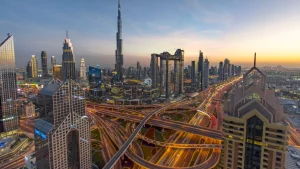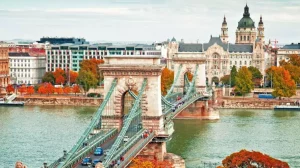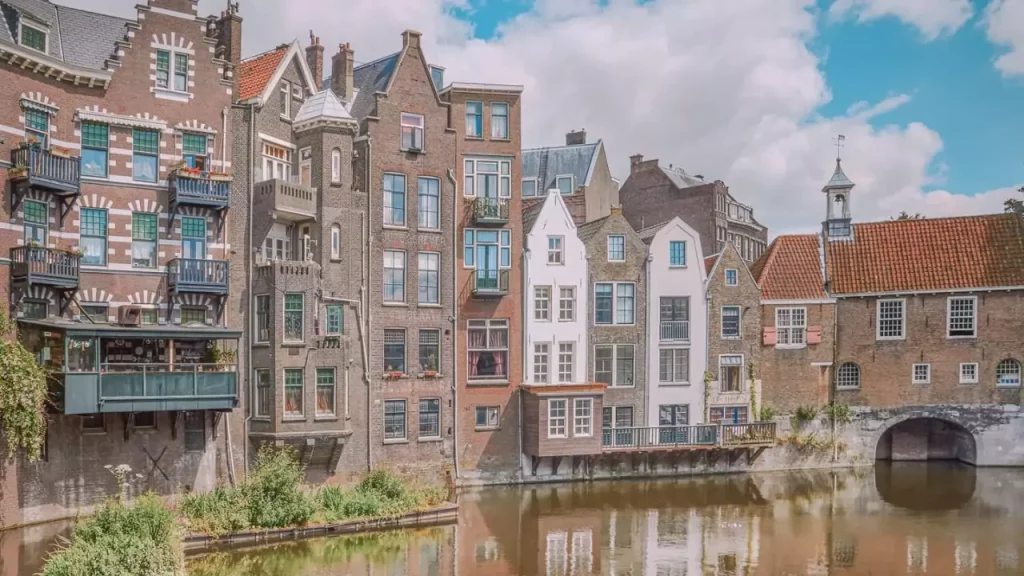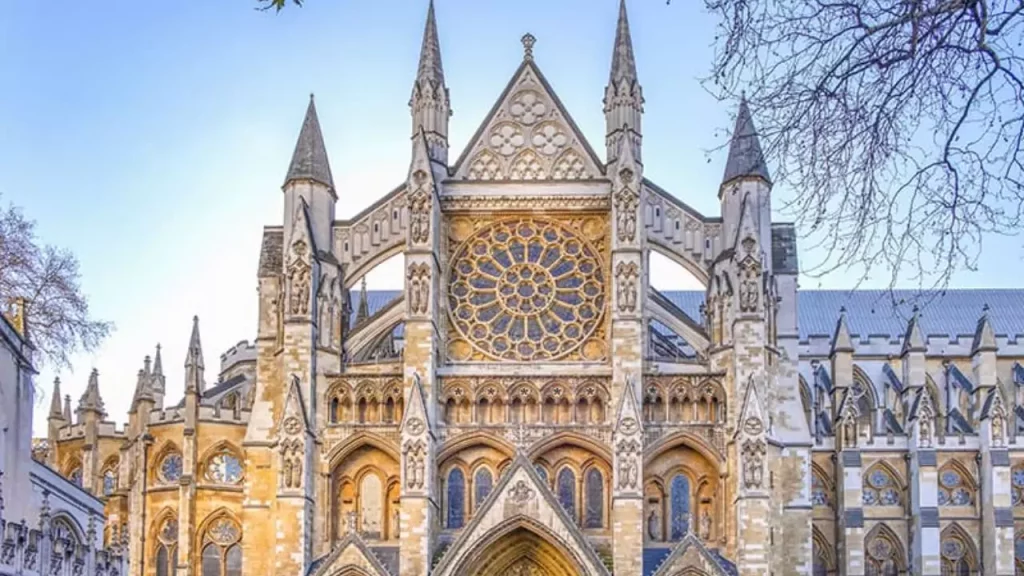Saudi Arabia is a fascinating state with a colorful past, a vibrant modern culture, and amazing natural beauty. Every traveler visiting Saudi Arabia will leave with a diverse array of life-long memories and experiences, from the iconic Al Ula heritage village and the island of Qamari to the energetic and diverse cities of Jeddah and Riyadh.
For Muslims, Saudi Arabia is important because it is home to Mecca and Medina, the two holiest places in Islam, where millions of pilgrims from around the globe travel every year to fulfill their duty to God.
Table of Contents
The top 10 places in Saudi Arabia
1. Great Mosque of Mecca

For Muslims, Saudi Arabia is important because it is home to Mecca and Medina, the two holiest places in Islam, where millions of pilgrims from around the globe travel every year to fulfill their duty to God. The Great Mosque, which is enveloped by the busy city of Mecca, is a centuries-old architectural and cultural wonder in addition to a place of worship. It is a place of great spiritual value because of its significance in Islam and its ability to unite millions of people.
2. Masjid An Nabwi

Islam places great importance on the Prophet’s Mosque, or Masjid An Nabawi, located in Medina, Saudi Arabia. Founded by the prophet Muhammad, it includes the famous Green Dome and the prophet’s grave. Known for its vast grounds, elaborate construction, and tranquil atmosphere, the mosque serves as a major global hub for Muslim devotion.
Crowds of pilgrims swarm to enjoy the quiet, pray, and ask for blessings. The global Muslim community is deeply united and filled with admiration for Masjid An Nabawi because of its profound religious significance and rich historical and cultural background.
3. Mount Uhud

Islam’s most important historical and sacred location is Mount Uhud, which is located close to Medina in Saudi Arabia. The Battle of Uhud, an important event in the early history of Islam, took place atop the mountain, which makes it significant. The conflict, which took place in 625 CE, was a crucial conflict involving the Muslim people and their enemies.
with tourists free to stroll the mountain’s pathways and see the location of significant occasions. The Uhud martyrs’ graves are situated atop the mountain. Muslims experience a deep connection to the hardships and victories of early Islam when they climb Mount Uhud and consider its history, which inspires awe and reflection.
4. Dammam Corniche

Dammam Corniche, situated along the Arabian Gulf in Dammam, Saudi Arabia, is a picturesque waterfront destination that encapsulates both leisure and scenic beauty. The Corniche, with its well-maintained walkways and green spaces, offers a serene escape from the urban hustle. Visitors can enjoy breathtaking views of the gulf, stroll along the palm-lined promenade, and engage in recreational activities.
packed with new amenities like restaurants, parks, and active cultural venues, the area is a favorite hangout for families, joggers, and anybody looking for a laid-back vibe. Dammam Corniche becomes a compelling spectacle as the sun sets over the gulf, offering a wonderful backdrop for locals and visitors to relax and take in the coastal charm of the area.
5. Quba Mosque

Situated in Saudi Arabia on the outskirts of Medina, Quba Mosque is deeply religious and sacred in Islam. It is regarded as the first mosque that the Prophet Muhammad built after moving to Medina. Since the Prophet and the Muslims worked together to build it, the mosque is an image of harmony and hospitality.
The calm environs of Quba Mosque, which is often seen as a location of blessings and peace of mind, draw pilgrims and tourists. Its white minarets and domes, paired with its simple yet exquisite architecture, capture the spirit of early Islamic architecture. Quba Mosque, one of the oldest mosques in Islam, invites visitors to experience its hallowed ambiance while serving as a witness to the rich history and spirituality that permeate Medina.
6. King Abdul Aziz History Museum

Saudi Arabia honors the life and works of King Abdulaziz Al Saud, the man who created the Kingdom of Saudi Arabia. Through relics, images, and displays that chart the kingdom’s creation, the museum provides an engrossing trip through the history of the Arabian Peninsula. The museum’s architecture offers visitors a visually arresting experience by beautifully fusing heritage and modern.
The museum acts as a storehouse of historical narratives, spanning from the early years of King Abdulaziz’s reign until the creation of the kingdom. This gives visitors a grasp of the rich cultural legacy and pivotal events that built Saudi Arabia. The King Abdulaziz History Museum honors King Abdulaziz’s vision and leadership through its exhibitions and interactive displays, serving as a significant resource for anybody curious about the history and cultural identity of the Kingdom of Saudi Arabia.
7. Aseer National Park

Located in the Aseer Region of southwest Saudi Arabia, Aseer National Park entices nature lovers with its varied landscape. With its towering mountains, rich woods, and beautiful valleys, the park provides a haven for anyone seeking to escape into the natural splendor of the kingdom. Hiking and picnics are two popular outdoor activities it offers, drawing in both locals and visitors.
The park offers a sanctuary for people looking for solace in its beautiful surroundings, in addition to showing a variety of unusual plant species. Even though the facilities and attractions may have changed over time, Aseer National Park is still a friendly place for anyone looking for peace in the middle of nature and an homage to the extensive plant and animal life of the area.
8. Heritage Village of Al Ula

Visitors may take a step back in time and experience the customs, architecture, and way of life of the past at this carefully held village. Through its historic mud-brick buildings, winding lanes, and classic courtyards, the Heritage Village carries visitors back in time. The village showcases the artistry and way of life of the ancient Nabateans, who formerly called this region home, offering insights into their customs.
Visitors can explore the intricate details of the architecture and traditional marketplaces and experience the authenticity of the region’s heritage.
9. Hira of Cave

Prophet Muhammad is famous for having received the first revelation of the Quran from the angel Gabriel in this sacred cave. Situated atop Jabal al-Nour mountain, the cave provides a peaceful and reflective area for both pilgrims and non-pilgrims. Climbing the mountain represents the Prophet’s spiritual journey during the ascension to Hira.
the Cave of Hira, seeking spiritual reflection and a connection to the origins of Islam. The humble cave, with its historical resonance, stands as a symbol of the profound moment that marked the beginning of the Islamic revelation, making it a revered site for Muslims from around the world.
10. The Ibraheem Palace

Located in the old area of Kut, Hofuf, and Al Ahsa, the Ibraheem Palace holds historical value. Al-Kut was its previous name. The Ottoman Governor at the time, Ali Ibn Ahmed Ibn Lawand Al-Burayki, constructed it in 1556. The palace housed the Ottoman Army’s military headquarters under Al-Ahsa’s Ottoman rule.
The Ibraheem Place’s architecture combines military and Islamic design elements. The Islamic style can be seen in the mihrab, semicircular arches, and Islamic domes. The Turkish type of minaret, with its spiritual staircase, is an influence. The military theme of the palace’s architecture is reflected in the enormous towers that encircle it, the army barracks, and the horse stables.
Conclusion
Saudi Arabia provides visitors with an array of amazing experiences and memories that mix current wonders with historical legacies. Saudi Arabia holds significant religious value for Muslims since millions of pilgrims visit Mecca and Medina, the two holiest sites, annually to engage in spiritual activities.








